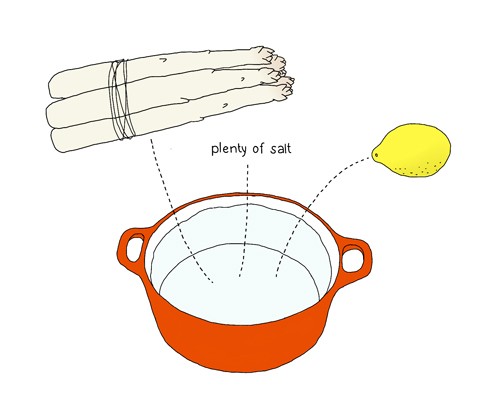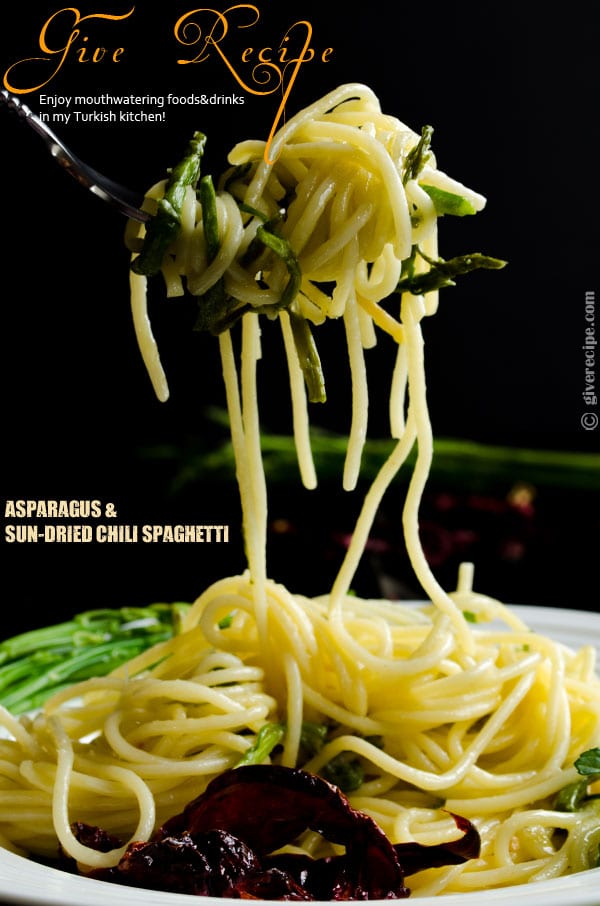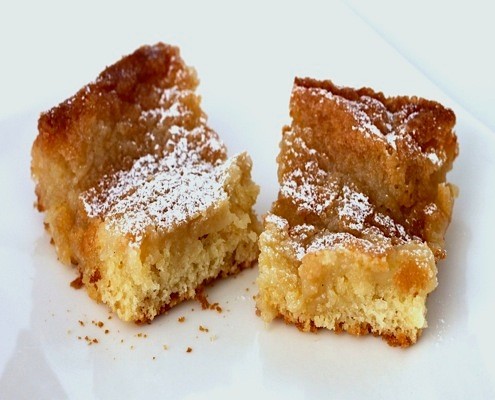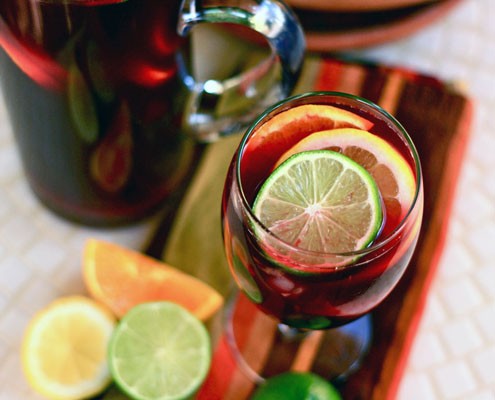Steen Hanssen is a Berlin based food writer who loves…
Welcome to German spargel season – join in as Steen Hanssens gives us the lowdown on how to best enjoy this lovely delicacy.
Text By Steen Hanssen – Illustration By Johanna Kindvall

May traditionally marks the delightful peak of the German asparagus season. The white asparagus (Asparagus officinalis) or Spargel as it is called here is by all accounts one of the most anticipated and exciting culinary highlight of the year. The event also triggers the obligatory annual Spargel media frenzy. Local and national broadcasters will embed their reporters into the sandy Spargel fields of Brandenburg (The Eastern German state surrounding Berlin) to conduct interviews with Spargel farmers, pundits, experts and cooks.
There will yet again be discussions on why mostly Polish and so few Germans workers perform the hard manual back wrenching Spargel harvest, you will witness deliberations with weather anchor’s on how global warming might or might not prolong the Spargel season and of course no TV show these days without a celebrity chef presenting their favorite, and in this case, asparagus dish. Trendy Berlin lifestyle and city magazines as well as newspapers will run front page covers on topics such as “top ten Brandenburger asparagus farms for families” , “100 things you didn’t know about asparagus” or “How to make Spargelsülze with Joghurt-Wasabi-Sauce”.
For many Germans the annual asparagus get together meal is a much anticipated event where friends and family meet up to prepare and indulge in a Spargel feast that also represents the definite farewell to winter. Kids will assist their parents in peeling the Spargel and discussions will revolve around how best to make a Hollandaise sauce or how to utilize the Spargel peals for soup or why your urine will smell strange after the meal.
Spargel is an affordable delicacy that everyone can enjoy, it’s not an “elitist” culinary experience reserved for the privileged few. The first Spargel harvest is quite expensive but come mid May and you’ll be able to buy top-quality fresh Spargel from Beelitz, (an area located South West of Berlin and widely acknowledged for it’s premium quality asparagus) for 5 or 6 Euro per kilo. The German Spargel season ends at Midsummer, or as an old saying goes “Kirschen rot, Spargel tot“ (cherry red, asparagus dead).
There are hundreds of asparagus dishes and recipes, including the use of green and purple/red asparagus. Beside asparagus soups and green asparagus on the grill with olive oil, I normally stick to the perhaps most classical preparation method: cooked and served with thin slices of cured Schinken (black forest ham if available, but prosciutto or parma ham will also do) fresh new potatoes, Hollandaise and pure butter sauce. Here’s how it’s done:
Estimate half a kilo white asparagus (2 1/4 pounds), 100g (1/4 pound) of black forest ham and a few small new potatoes per person. Cut off the root end of your Beelitzer Spargel and peel them like carrots. Cook the asparagus in plenty of water containing lots of salt and organic lemon zest with juice. The lemon will counterbalance the Spargel’s bitterness while preserving the desirable yellowish coloring. Cook for 10-15 minutes, depending of how soft you want your Spargel, I prefer it with a slight bite and will normally not cook beyond 10 minutes. The very fresh new potatoes must cook 4 minutes in salt water and rest for 10 while the Hollandaise sauce should of course be prepared from scratch by hand mixing egg yolk, butter, lemon juice, mustard and seasoning. Add very thin slices of premium quality cured ham and my favorite sauce; being simply warm melted butter. When eating the first Spargel meal of the year I tend to focus exclusively on the asparagus, largely ignoring the Hollandaise sauce, potatoes and even the delicious ham, I’ll just go all Commando style into the Spargel soaked in melted butter.
You want to drink a dry white wine with your Spargel. A Chardonnay (Morillon) or a Grauburgunder (Pinot Gris, Ruländer) will nicely complement asparagus with the Pinot family. This meal remains among my top five all time favorite dishes and during the cold months prior to the asparagus season I’ll actually get goosebumps just thinking about the buried Spargel treasure awaiting me in the outskirts of Beelitz….
Prost!
Steen Hanssen is a Berlin based food writer who loves to eat, drink, cook, read, write and think about good food and beverages. Though Kierkegaard argues it'll lead to failure and despair, Steen embraces the aesthetic sphere of existences striving for novelty, pleasure seeking while edging towards the perfect asparagus experience. Steen is also a contributor to Serious Eats.




I had no idea it was such a big celebration. Sounds like a great time to be in the Berlin area. Asparagus are one of my favorite vegetables and I look forward to them every year.
Great article! Sounds like such a festive event :)
We were introduced to Spargel last summer on
a visit to see our friends.It is delightful.
Thanks for the article. Wish we could buy some here to prepare.